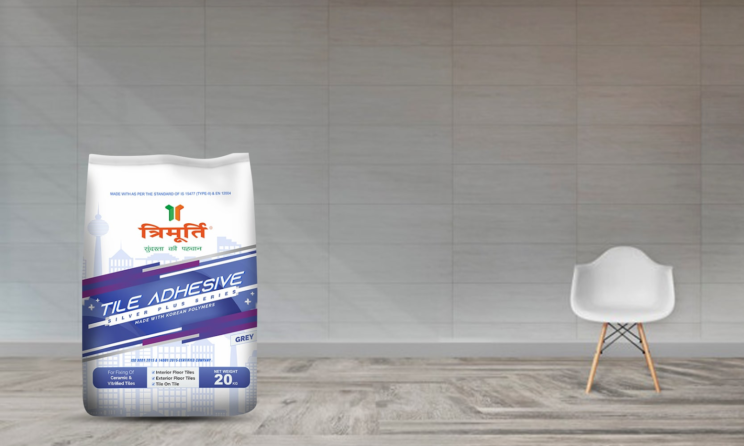
It is becoming more and more crucial for both professionals and do-it-yourselfers to comprehend the science underlying contemporary building materials. Among these materials, wall putty and tile chemicals have completely changed the way we finish both the inside and the outside. The intriguing world of tile chemicals, their processes of action, and their vital role in building will all be covered in this extensive post
Comprehending Tile Chemicals: The Basis of Contemporary Tiling
The term “tile chemicals” refers to a wide range of grouts, sealants, and adhesives that are specially made for tile installation. These chemical substances have changed the conventional tile-fixing process from straightforward cement-based applications to more complex bonding solutions. Polymer-modified cement, which combines the strength of cement with the flexibility and adhesive qualities of polymers, is the main ingredient in the majority of tile chemicals.
The Science of Tile Adhesives
Contemporary tile chemicals are designed to give tiles an exceptionally high adhesion to a variety of surfaces. To ensure lifespan and durability, a complicated chemistry including polymers, cement, and additional chemicals is used. These substances go through several processes that produce a strong adhesive matrix when combined with water. In addition to binding the tile to the surface, its matrix offers protection against physical stress, wetness, and temperature fluctuations.
Wall Putty: The Ideal Tiling Canvas
Understanding the function of wall putty in the tiling process is crucial before delving further into tile chemicals. Any successful tiling job starts with wall putty. It produces a level, flat surface that improves tile chemicals’ adherence. Putty is applied to wall surfaces to assist remove flaws and create a sturdy foundation for tile installation.
How Wall Putty and Tile Chemicals Work Together
The proper application of wall putty produces the perfect surface for the chemical adherence of tiles. Dried wall putty’s porosity enables tile chemicals to create a stronger connection, thereby “locking” the tiles in place. The tiles will stay firmly in place for many years to come thanks to this mixture of wall putty and tile chemicals.
Types of Chemicals Used in Tile and Their Uses
Adhesives
Adhesives are the most widely utilized tile chemicals. These are available in several formulas, each intended for a particular use. While some are designed for external use or locations with heavy moisture exposure, others are intended for inside walls. Depending on the intended use, the chemical composition varies; some incorporate extra waterproofing agents or flexibility enhancers.
Grouts
Another necessary tile chemical for filling in the spaces between tiles is grout. Antimicrobial qualities and improved water resistance are features of contemporary grout formulations. These substances help to stabilize the tiled surface overall in addition to filling up gaps.
The Value of Appropriate Utilization
The right application methods are crucial to tile chemicals’ efficacy. Before using any tile chemicals, the surface needs to be thoroughly cleaned and prepped with wall putty. For best results, the right amount of chemicals must be applied, and the right length of time must be given for curing.
Health and Environmental Aspects
More and more, contemporary tile chemicals are being developed with health and environmental issues in mind. These days, a lot of manufacturers have low-VOC (volatile organic compounds) solutions that minimize environmental effects while maintaining high performance. For indoor applications where air quality is an issue, this is especially crucial.
Solving Typical Problems
If the right application techniques aren’t followed, problems can occur even with the greatest tile chemicals. Common issues include tile displacement, grout cracking, and inadequate bonding. The majority of these problems can be attributed to inadequate curing time, wrong chemical mixing ratios, or poor surface preparation.
Upkeep and Durability
The type of tile chemicals used and appropriate care have a major impact on how long tiled surfaces last. Both the tiles and the chemical connections that hold them in place can last longer with routine cleaning and sealing. Longer service life and less maintenance are two benefits of making the initial investment in high-quality tile chemicals.
New Developments in Chemical Tile Technology
New developments are constantly being made in the field of tile chemicals. Self-leveling chemicals, quick-setting formulations, and improved flexibility are examples of recent advancements. These developments increase the overall durability of tiled surfaces and make installation simpler and more dependable.
Value Proposition and Cost-Effectiveness
High-quality tile chemicals may seem more expensive at first, but their long-term worth cannot be disputed with wall putty cost. Modern tile chemicals provide longer durability, higher water resistance, and better bonding than traditional techniques. Over time, this results in fewer replacements and repairs.
Tile Chemicals’ Future
They may anticipate even more advancements in tile chemistry as construction technology develops. Future advancements could include improved eco-friendly formulas, self-repairing smart materials, and even higher performance attributes.
Professional Advice for Effective Tile Chemical Application
Expert tile installers are aware that using tile chemicals and wall putty correctly is crucial to the success of any tiling operation. The way these compounds cure and bond is greatly influenced by temperature and humidity. Installation should be carried out in temperatures between 10°C and 35°C for best results. The chemical reactions required for appropriate bonding might be impacted by extremely high or low temperatures.
Surface Preparation’s Function
Surface preparation is crucial before using any tile chemicals or wall putty. To prevent adhesion issues, the substrate needs to be dry, clean, and free of any loose particles, oils, or prior coatings. For the best possible bond between the wall putty and the surface, several experts advise mild sanding followed by thorough cleaning.
Knowledge of Chemical Reaction Durations
The reaction and cure times of different tile chemicals vary. Grouting can be done in a few hours with certain rapid-setting formulae and up to 24 hours with others. Environmental factors and chemical makeup are to blame for these time discrepancies. By being aware of these factors, tiled surfaces can be properly cured and avoid premature loading.
Water Quality’s Effect
The effectiveness of tile chemicals can be greatly impacted by the quality of the water used to mix them. Impurity-containing or hard water might disrupt the chemical reactions required for a good bond. To get the best outcomes, many experts advise using potable, pure water. Maintaining the proper water-to-chemical ratio is essential for putty on wall or tile adhesive mixing in order to get the best possible consistency and performance.
Conclusion:
It is impossible to overestimate the significance of tile chemicals in contemporary construction. These materials are now vital in both commercial and residential applications because they ensure long-term durability and provide necessary adhesion. Tile chemicals produce surfaces that are not only aesthetically pleasing but also long-lasting when used in conjunction with appropriate wall putty application and installation methods. It is easier to guarantee effective tile installation projects and the best long-term outcomes when one is aware of how these chemicals function and how important they are.





